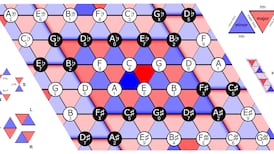New technology has revealed “the most detailed images ever” of first World War shipwrecks in the Irish Sea.
A team of scientists led by Dr Ruth Plets of the School of Environmental Sciences at Ulster University set out to capture the “highest resolution acoustic data possible” of the wrecks.
The researchers used a new “multi-beam system” on board the Marine Institute’s Celtic Voyager research vessel to get the “best data ever acquired over these wrecks”.
0 of 3
“We were able to capture the most detailed images of the entirety of the wrecks ever,” said Dr Plets. “Some of the wrecks, which are too deep to be dived on, have not been seen in 100 years.
“So this is the first time we can examine what has happened to them, during sinking and in the intervening 100 years, and try to predict their future preservation state.”
SS Chirripo
Among the shipwrecks surveyed was the SS Chirripo, which was built in Belfast and acquired by Elders & Fyffes in 1906 as part of their fleet used in the banana trade.
It sank in 1917 off Black Head, Co Antrim, after it struck a UC-75 mine while outward-bound from Belfast. A UC-75 was a mine-laying submarine or U-boat in the German Imperial Navy during the first World War. There were no casualties.
SS Polwell
Another wreck the researchers have gathered data on is the SS Polwell, which was torpedoed in 1918 northeast of Lambay Island.
According to Warships, U-Boats and Liners, a guide to shipwrecks mapped in Irish waters, the British steamer was on a trip from Troon, Scotland, to France with a cargo of coal on June 5th, 1918.
When a warning shot was fired across its bows by a German submarine as it approached the Irish coast, the crew of 30 abandoned ship and took to two lifeboats.
The submarine fired a single shot at the Polwell – hitting it amidships and sinking it. All of the crew landed safely at Rockabill lighthouse off Skerries an hour later.
RMS Leinster
Another wreck surveyed by the research team was that of the RMS Leinster, which sank in 1918 after being torpedoed off Howth Head.
More than 500 people died in what was the single greatest loss of life in the Irish Sea.
According to a website dedicated to those who perished on the ship, it was shortly before 10 am, about 16 miles from Dun Laoghaire, when people on the deck of the Leinster saw a torpedo approaching the port side of the ship.
It missed, passing in front. Soon afterwards another torpedo struck the port side where the postal sorting room was located. Postal sorter John Higgins said the torpedo exploded, blowing a hole in the port side. The explosion travelled across the ship, also blowing a hole in the starboard side.
In an attempt to return to port, the Leinster turned 180 degrees and faced the direction from which it had come.
With speed reduced and slowly sinking, the ship sustained few casualties and lifeboats were being launched.
At this point a torpedo struck the ship on the starboard side, causing catastrophic damage. The Leinster sank soon afterwards, bow first.
Many of those on board were killed in the sinking, while many more died awaiting rescue.
Explaining how the research was carried out, Dr Plets said the team “moved away from traditional survey strategies”.
“We slowed the vessel right down to allow us to get many more data points over the wreck, with millions of sounding per wreck,” she said.
“The detail is amazing. We can see things such as handrails, masts, the hawse pipe (where the anchor was stored) and hatches.
“Some of the vessels have split into sections, and we can even see details of the internal structure. With the visibility conditions in the Irish Sea, no diver or underwater camera could ever get such a great overview of these wrecks.”
As well as acoustic imaging, the team collected samples from around the wreck to see what its potential impact is on the seabed ecology. Sediment samples were also taken for chemical analysis to determine if these wrecks cause a concern for pollution.
The project is being carried out to coincide with first World War centenary commemorations.
“We often forget the battles that were fought in our seas,” said Dr Plets. “More emphasis is put on the battles that went on in the trenches.
“However, at least 2,000 Irishmen lost their lives at sea, but unlike on land, there is no tangible monument or place to commemorate because of the location on the bottom of the sea.”















